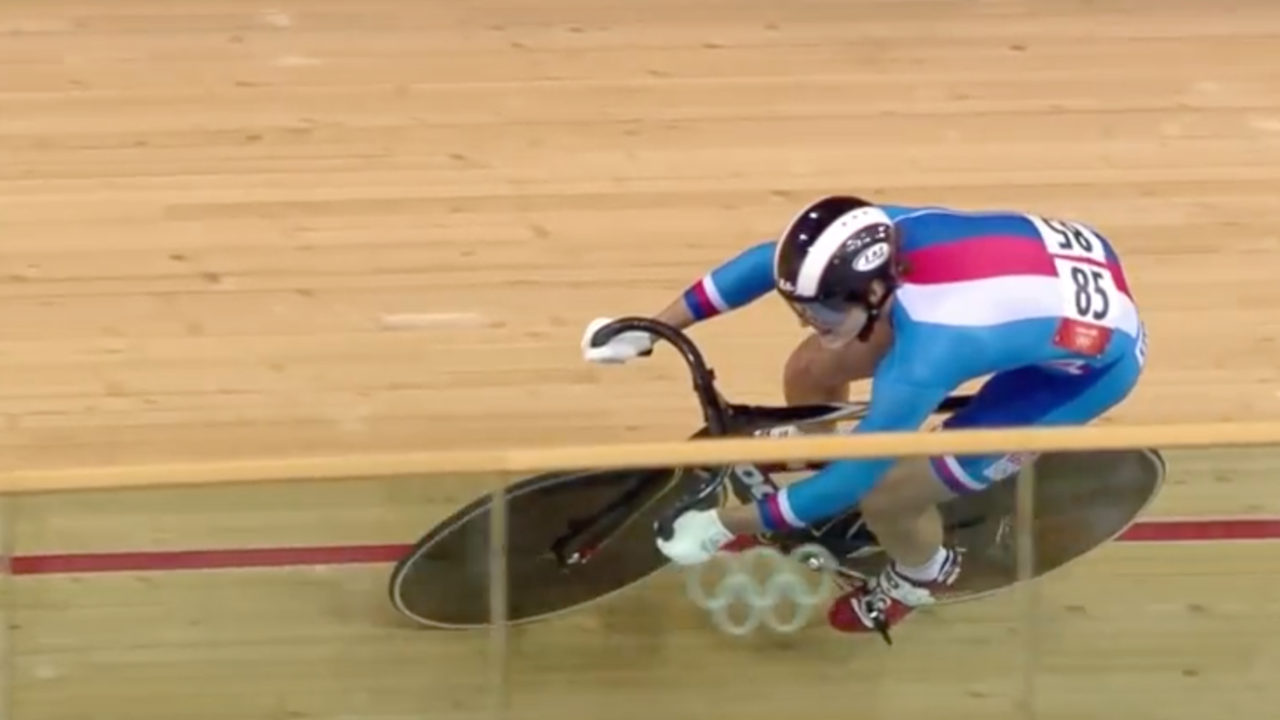The fastest entry line for the 200m time trial

With the change in the UCI rulings, the importance of a smooth and fast 200m time has never been more important yet we have watched many cyclists get it wrong and end up with a poor seeding going into the sprint rounds.
Finding the right entry line will differ from track to track based on the differentiation in banking gradients, transitions and track distances (e.g. 250 or 333m etc.).
Have a look at the image below...

You'll see in the image above, we've marked out the top of the banking and placed stars which represent the position or line you may take on entry into the flying 200m.
The green arrow indicates the point on the fence line where the track starts to 'run up hill'.
One of the first things worth doing when arriving at a new track is:
Study exactly where the fence line starts to run up hill in the straights.
Why?
Because if you stick to the fence line too long on entry into the 200m effort, you'll find yourself running up hill before proceeding down hill which can wash off valuable speed that you've gained in previous wind up laps.
A good way to establish a nice smooth and fast entry line on a new track, is to roll the line several times in the warm up.
What you will find is that to some extent your bike will find a natural path on its own and usually this is pretty close to the line you should take on race day.
We often see a lot of riders (particularly on the newest track, the Anna Meares Velodrome) staying way too high on the fence for too long.
This has a big impact on entry speeds, which is critical to overall time.
Timing your entry is so important!!
Generally, one of the main reason riders are staying too high for too long is because they haven't learnt to 'lean' on the track, and instead try and 'steer' only, which makes it difficult to 'hold' their riding line as close to the black line as possible.
The only other exception to this can be with junior gearing - where a 'dive down' from a higher position may allow junior riders to achieve their peak cadence on tiny gears *just* before starting the clock (ensuring they don't fatigue too early in the wind up stages of the event).
Once you've timed your entry and coupled it with a nice smooth entry line, you'll set yourself up for a successful 200m trial.
Are you finding it difficult to negotiate a smooth and fast 200m entry line?
Feel free to reach out and leave us some comments in the box below.


